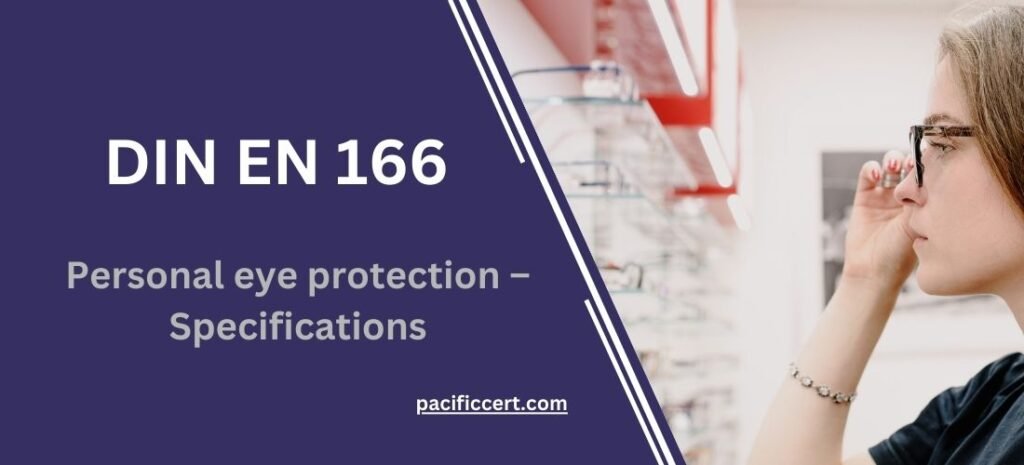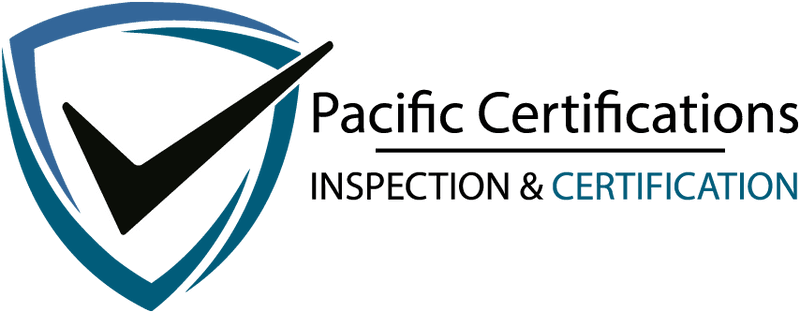
What is DIN EN 166- Personal eye protection – Specifications?
DIN EN 166- Personal eye protection sets out the specifications for personal eye protection equipment. The standard specifies the requirements for the design, performance, and testing of eyewear designed to protect the eyes from a range of hazards.
The standard covers a range of factors that are critical to ensuring that eyewear provides adequate protection. Including impact resistance, optical clarity, and the ability to withstand a range of environmental conditions. It also specifies the criteria for determining the appropriate level of protection for different types of eyewear, based on the intended use and the level of risk involved.
The standard applies to a wide range of personal eye protection equipment. Including safety glasses, goggles, and face shields, and is designed to ensure that these products provide consistent levels of protection across the European Union. Compliance with the DIN EN 166 standard is often a requirement for the sale and use of personal eye protection equipment in Europe.
Requirements of DIN EN 166
Optical Properties: The eyewear must provide clear and undistorted vision, with no optical defects that could impair the wearer’s vision or cause eye strain.
Impact Resistance: The eyewear must be able to withstand the impact of small particles at high speeds without breaking or shattering. The level of impact resistance required depends on the intended use of the eyewear and the potential hazards involved.
Resistance to Penetration: The eyewear must be able to resist the penetration of objects. Such as small fragments or liquids.
Robustness: The eyewear must be able to withstand normal wear and tear, as well as exposure to a range of environmental conditions. Such as high and low temperatures, humidity, and exposure to chemicals.
Marking and Information: The eyewear must be marked with relevant information. Such as the manufacturer’s name, the product model number, and the level of protection provided. Instructions for use and cleaning should also be provided.
Comfort and Fit: The eyewear must be designed to fit comfortably and securely on the wearer’s face. Without causing discomfort or obstructing the wearer’s vision.
Compatibility: The eyewear should be compatible with other personal protective equipment. Such as hard hats or respirators.
Benefits of DIN EN 166
Improved Safety: The standard ensures that personal eye protection equipment provides adequate protection against a range of hazards. Including impact, penetration, and optical distortion. This helps to reduce the risk of eye injuries and improve worker safety.
Consistency: Compliance with the standard ensures that personal eye protection equipment provides consistent levels of protection across the European Union, regardless of the manufacturer or brand. This makes it easier for employers to select and purchase suitable eye protection equipment for their workers.
Legal Compliance: Compliance with the DIN EN 166 standard is often a legal requirement for the sale and use of personal eye protection equipment in Europe. So, By complying with the standard, employers can ensure that they are meeting their legal obligations. And avoid potential fines or legal action.
Improved Comfort: The standard requires that personal eye protection equipment be designed to fit comfortably and securely on the wearer’s face. This helps to ensure that workers are more likely to wear the eyewear when needed. Improving overall safety.
Improved Productivity: By reducing the risk of eye injuries, compliance with the standard can help to improve worker productivity. By reducing downtime due to injury or illness.
Compliance with the DIN EN 166 standard is an important step in ensuring that workers are adequately protected against eye injuries in the workplace. While also improving productivity and legal compliance.
Who needs DIN EN 166- Personal eye protection – Specifications?
Manufacturing: Workers in manufacturing industries are often exposed to hazards. Such as flying debris, chemicals, and UV radiation. Compliance with the DIN EN 166 standard is necessary to ensure that workers are protected against these hazards.
Construction: Workers in the construction industry are at risk of eye injuries from a range of hazards. Such as flying debris, dust, and sparks. Compliance with the standard is necessary to ensure that workers are protected against these hazards.
Healthcare: Healthcare workers are at risk of eye injuries from exposure to bloodborne pathogens, chemicals. Also, from infectious materials. Compliance with this standard is necessary to ensure that workers are protected against these hazards.
Laboratory and Research: Workers in laboratories and research facilities are at risk of eye injuries from exposure to chemicals, biological materials, and laser radiation. So, Compliance with the DIN EN 166 standard is necessary to ensure that workers are protected against these hazards.
Agriculture and forestry: Workers in agriculture and forestry are at risk of eye injuries from exposure to flying debris, chemicals, and UV radiation. So, Compliance with the DIN EN 166 standard is necessary to ensure that workers are protected against these hazards.
Pacific Certifications is accredited by ABIS, if you need more support with EN 166, please contact us at +91-8595603096 or support@pacificcert.com
Read About: EN 81: SAFETY OF LIFTS







